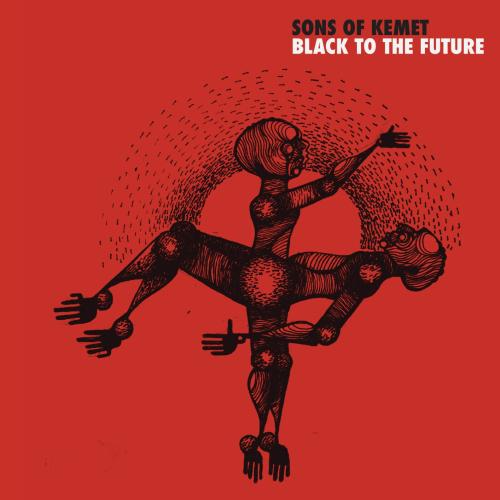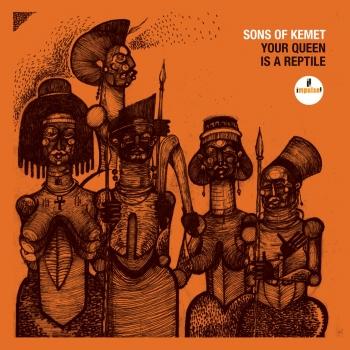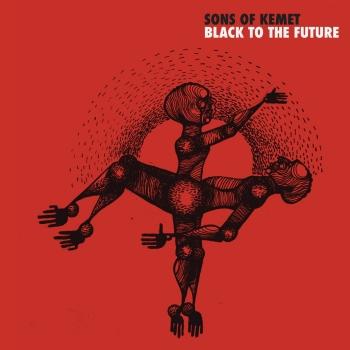
Black To The Future Sons Of Kemet
Album info
Album-Release:
2021
HRA-Release:
14.05.2021
Album including Album cover
I`m sorry!
Dear HIGHRESAUDIO Visitor,
due to territorial constraints and also different releases dates in each country you currently can`t purchase this album. We are updating our release dates twice a week. So, please feel free to check from time-to-time, if the album is available for your country.
We suggest, that you bookmark the album and use our Short List function.
Thank you for your understanding and patience.
Yours sincerely, HIGHRESAUDIO
- 1 Field Negus 03:03
- 2 Pick Up Your Burning Cross 03:44
- 3 Think Of Home 03:32
- 4 Hustle 05:18
- 5 For The Culture 04:01
- 6 To Never Forget The Source 02:55
- 7 In Remembrance Of Those Fallen 05:06
- 8 Let The Circle Be Unbroken 06:29
- 9 Envision Yourself Levitating 08:23
- 10 Throughout The Madness, Stay Strong 05:53
- 11 Black 02:42
Info for Black To The Future
Black to the future is a sonic poem for the invocation of power, remembrance and healing. It envisions our progression towards a future in which indigenous knowledge and wisdom is centred in the realisation of a harmonious balance between the human, natural and spiritual world. The outwards gaze of Joshua Idehen’s words on ‘Field negus’ and ‘Black’ bookend the album and express the rage, frustration and perception arising in the wake of George Floyd’s death and the subsequent BLM protests. The work then flows inwards from both directions meeting at the central (ideological) axis-point of the track ‘to never forget The Source’. The Source refers to the principles which govern traditional African cosmologies / ontological outlooks and symbolises the inner journey. It is the unifying factor that gives meaning both to looking backwards (in nuancing and continually adding depth of contextualisation and meaning to the past) and visioning forward (in speculating and striving to realise a better future for humanity).
Black to the future depicts a movement to redefine and reaffirm what it means to strive for black power. Power is seen as the lifeforce energy needed to build upon the conceptual frameworks of our ancestors so their wisdom might guide our intentions and focus. Music can be likened to a time travelling vessel whereby cultural value systems of the past are encoded within sound and projected / protected throughout ages. The track titles all combine to reflect a single poetic statement to which a depth of symbolic meaning can be intuited in combination with the music/sonic information. This meaning is not universal and the cultural context of the listener will shape their understanding, yet in the end, the overarching message remains the same – For humanity to progress we must consider what it means for Black to the Future.
This album begins and ends with powerful lyrical and musical statements of rage and frustration, expressed outwardly in the wake of George Floyd’s death and the subsequent BLM protests. The album flows inwards from the start and finish to deeper, inner journeys – looking to forgotten cosmologies and searching for new ways of existing.
The lead single “Hustle” is a propulsive, urgent song with the poetic, chanting lyrics of Kojey Radical. He speaks: “Why ain’t no one tell me peace of mind was pricey / I could dance with the devil but that’s unlikely / Might go broke but that’s unlike me / I was born from the mud with the hustle inside me.”
About the accompanying music video, Hutchings says: “The dancers represent the duality present within any struggle to transcend internal limitations. As the video progresses, we see that it’s only once the differing elements of the self are reconciled and act in unison that rebirth (symbolized by the immersion in water) can occur.”
Sons Of Kemet
Sons Of Kemet
In the spring of 2011, patrons of Charlie Wright's in East London saw a performance that stopped them in their tracks. It was the unveiling of a group with a unique take on jazz, Caribbean folk music and African Diasporan history. The band was Sons of Kemet, a super-group of sorts led by clarinetist, saxophonist and composer Shabaka Hutchings, featuring Oren Marshall on tuba and both Tom Skinner and Seb Rochford on drums. The combination of these mighty creative forces yields music that is powerful, lyrical and, above all, fiercely original.
In September 2013 the band will release its hotly anticipated debut album Burn having undergone mercurial development by way of numerous gigs, the highlights of which include a session for BBC Radio 3's Jazz On 3, a sensational debut at this year's Cheltenham Jazz Festival and a collaboration with the BBC Concert Orchestra at the Queen Elizabeth Hall as part of the 2012 London Jazz Festival.
The memory of that first performance at Charlie Wright's is still clear in Hutchings' mind, as is the reason why he opted for the relatively unusual twin percussion team that that gives Sons of Kemet their compelling and infectious sound. Hutchings had extensive experience working with each drummer in different settings - Skinner in the acclaimed trio Zed-U [alongside bassist Neil Charles] and Rochford in Mercury Music Prize nominees Polar Bear, where Hutchings frequently depped for saxophonist Pete Wareham. Skinner and Rochford's visceral exchange of rhythmic ideas is an unforgettable, highly danceable experience. Throw into this one of the great wild cards of contemporary British music, Oren Marshall on tuba, and you have a wonderfully unorthodox configuration.
Although born in London, 29 year-old, Hutchings spent most of his childhood in Barbados, where he studied classical clarinet and played in various calypso and reggae bands before moving to Birmingham in 1999. Upon his return to England, he attended the renowned Guildhall School Of Music, joined the Tomorrow's Warriors collective and went on to work with artists such as Jerry Dammers, The Heliocentrics and Courtney Pine. Able to contribute as much to swing as free improvised settings, Hutchings was soon recognized as an exciting new personality in British jazz, and his career received yet another boost when he was named BBC Radio 3's New Generation Jazz Artist for 2010 (a two-year tenure). The consensus was that this was a musician with strong ideas as well as ‘chops' and Sons Of Kemet bears this out in no uncertain terms.
Beyond the impressive credentials of the band members, it is the raison d'être of the group that explains why it has made a sizeable impact in its short life span. There is a meaningful cultural slant to the whole project. "I thought none of the music I'm playing had a Caribbean accent, so I wanted to have that influence," Hutchings says. "I wanted it to be that deeper thing that links into the African Diaspora but isn't clichéd, where you hear it and think this is that nice happy music from the islands."
So it was back to his childhood and to Barbados that Hutchings turned. Seeking guidance from Barbadian ethnomusicologists specializing in early Caribbean music, he was soon furnished with numerous recordings that he studied in depth. Before long, the links between the music of New Orleans and West Africa became clear and the work of two visionary Jamaican artists in particular percolated into Hutchings' mind: Count Ossie and Cedric ‘Im' Brooks, two musicians who would become major influences on the band.
The reprise of The Rivers Of Babylon, which Hutchings describes as a ‘standard' within the Afro-Caribbean tradition and a staple of Rastafarian nyabinghi drumming music, is arguably the clearest indication of the far-reaching history that frames Son Of Kemet. Yet the themes and sources of inspiration for other songs also reveal how far and wide Hutchings has cast his conceptual net. Inner Babylon addresses the issue of the cultural hegemony of America; The Godfather pays tribute to the legendary Ethiopian musician Mulatu Atsatkue, with whom Hutchings and Tom Skinner have played with over the last few years; All Will Surely Burn is a reflection on the pressing subject of global warming while Hutchings' interest in literature is flagged up by two pieces that evoke writers who have inspired him: Song For Galeano is for Uruguayan historian Eduardo Galeano and The Book Of Disquiet is for the Portuguese poet Fernando Pessoa.
While the breadth of these references make it clear that Hutchings is very much engaged with the world around him in the widest possible sense, he has made an entirely personal statement through the name that he chose for the group. Kemet is one of the first recognized names for ancient Egypt and its last Nubian king was called Shabaka. "He wrote all of the ideological principles of the time in Egypt - they were the Kemetic principles," says Shabaka of his namesake, "these things have influenced Greek philosophy and a lot of western thinking." One of the things in Kemetic ideology that particularly interested him was the principle of a universal consciousness "that really struck a chord with what I was trying to do musically with the people I was playing with."
Exceptionally assured for a debut album, Burn surely has to become one of the standout releases for 2013. It's a curiously addictive album that manages to appeal to both heart and mind and there is little to compare it with. Instead it feels like that rare thing, an exciting new sound that somehow worms its way into your brain and won't let go.
This album contains no booklet.













